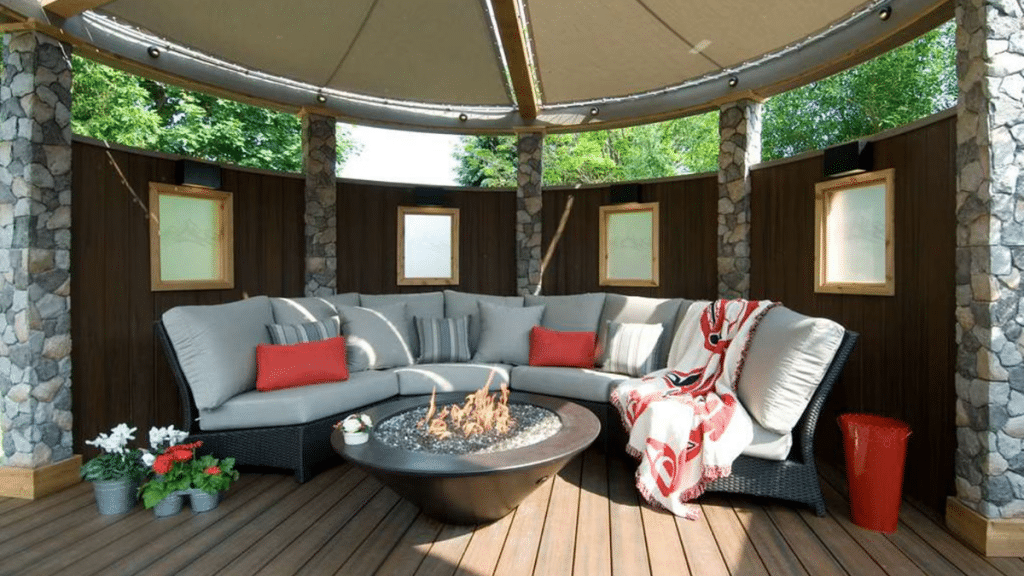Designing a deck isn’t just about adding square footage to your home—it’s about creating a space that enhances your lifestyle, boosts property value, and fits comfortably within your budget. Whether you envision summer barbecues, quiet mornings with coffee, or a private escape under the stars, thoughtful planning will shape how well your deck delivers. From choosing materials to setting a realistic budget, let’s walk through the essential decisions that bring a dream deck to life.
Define Your Deck’s Purpose First
Before sketching designs or comparing lumber prices, clarify the primary reason you’re building a deck. This will influence every choice that follows.
Is the goal to entertain large groups? Or are you after a peaceful retreat for two? Maybe it’s a family space, complete with storage for outdoor toys and a grill station. Knowing the core purpose—whether social, private, practical, or a combination—helps determine the layout, size, safety features, and even the materials you’ll need.
Think function before flair. A deck that looks great but doesn’t serve your needs can become more of a burden than a benefit.
Size, Shape, and Placement: What Works Best?
Decks aren’t one-size-fits-all. The shape and location must work with your home’s architecture, lot size, and even local building codes.
Start by assessing your outdoor space. A rectangular deck might make the most of a narrow yard, while a multi-level layout could take advantage of a slope. Don’t forget to factor in sunlight, wind exposure, and views. For example, a deck that catches the afternoon sun might need shade features like a pergola or awning.
Placement is also about convenience. How easily can people move between the house and the deck? Is the kitchen nearby for outdoor dining? These practical details can make a big difference in how enjoyable the space feels day-to-day.
Material Choices: Pros, Cons, and Maintenance
Your choice of decking material impacts the cost, durability, appearance, and upkeep.
Pressure-treated wood is budget-friendly and widely available but requires regular staining and sealing. Cedar and redwood are naturally resistant to insects and decay but cost more upfront. Composite decking, made from recycled materials, resists rot and splintering with little maintenance, though it’s pricier. PVC and aluminum options are ultra-durable and low-maintenance but may lack the natural look some homeowners prefer.
Consider your climate and your willingness to maintain the deck. Do you want a material that lasts a decade with minimal effort or are you okay with seasonal refinishing to preserve a wood look?
Style and Aesthetics: Blending with Your Home
Your deck should look like a seamless extension of your home—not an afterthought.
Use architectural cues from your house to guide design elements like railings, colors, and trim. A modern home might call for sleek lines and cable railings, while a cottage-style home might suit natural wood tones and classic balusters. Built-in seating, planters, and lighting can personalize the look and boost function.
To avoid clashing with your home’s design, create a visual bridge. This could be as simple as repeating trim details, matching paint colors, or continuing the same exterior materials (like stone or brick) into the deck structure.
Budgeting: Know Where to Splurge and Where to Save
Building a deck can range from a few thousand dollars to tens of thousands, depending on size, features, and materials. Establish your budget early and stick to it by understanding where your money is best spent.
Splurge on structural integrity—foundation, framing, and fasteners. These elements determine the deck’s lifespan and safety. Save by choosing mid-tier finishes or delaying optional extras like custom lighting or pergolas.
Labor costs are significant, especially if your deck is complex or elevated. Getting estimates from a trusted custom deck builder ensures you understand the scope of work and where you might trim costs without compromising quality.
Budget tip: Leave room for hidden expenses, like permits, inspections, or unexpected ground issues.
Safety and Local Building Codes
All dream decks must be safe decks. That means complying with local building regulations and safety codes.
Most municipalities require permits for new decks, and there are often rules regarding railing heights, stair design, load capacity, and distance from property lines. Ignoring these can lead to fines, forced teardown, or major insurance headaches.
A professional contractor will be familiar with these requirements and can help navigate the permitting process. Even if you’re going the DIY route, consult your local building department early to avoid surprises.
For a reliable source of up-to-date building code information, the International Code Council provides comprehensive guidance.
Accessories and Add-Ons: Make It Your Own
Once the core structure is in place, deck add-ons can make your space truly unique.
Think about:
- Lighting for ambiance and safety
- Built-in seating or benches for functionality
- Planters to bring in greenery
- Privacy screens if neighbors are close
- Outdoor kitchens or firepits for extended use
These additions don’t all need to happen at once. Build your deck in phases if your budget is tight—just plan for future upgrades in your initial design.
Final Thoughts
Building a deck is one of the most rewarding home improvement projects you can take on. But it’s not just about looks. Purpose, size, materials, and smart budgeting all play a part in making sure your deck enhances your lifestyle without becoming a headache.
By taking a thoughtful, step-by-step approach, you’ll end up with a deck that doesn’t just add value to your home—it adds value to how you live.

